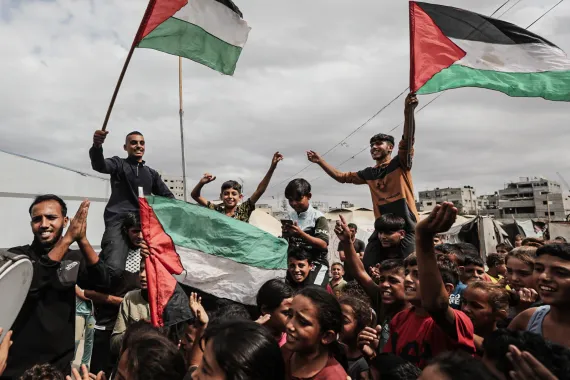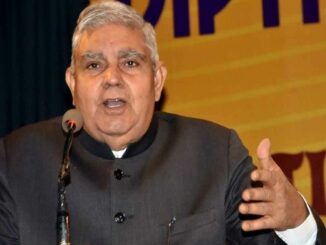

It is with cautious hope that we welcome the announcement of the first phase of a ceasefire agreement between Israel and Hamas, brokered under the auspices of U.S. President Donald Trump. After years of bloodshed, displacement, and renewed cycles of violence, any pause in hostilities is worth acknowledging—even if only as a tentative crack in a seemingly unbreakable pattern of conflict.
A history of ceasefires and their betrayals
The Middle East has seen too many ceasefires, truces, and “temporary pauses” — each promising relief, each eventually unraveling. In the recent Gaza wars, ceasefires reached in 2014, 2018, and more recently in the cycles of 2023–2025 have repeatedly failed to hold. Each time, one side or the other—often both—has accused the counterpart of violations, triggering renewed violence. The most recent ceasefire efforts earlier in 2025 illustrate how fragile the peace can be: the 60-day truce proposals faltered over disagreements about what comes next, the terms of withdrawal, disarmament, and hostage release.
Moreover, critics have accused previous U.S. brokers (including the current one) of tacitly accepting Israeli escape clauses or even endorsing renewed operations when the truce seemed inconvenient.
Thus, though we greet today’s announcement with relief, we cannot gloss over the long record of betrayal, backtracking, and the “ceasefire trap.” The past teaches that a ceasefire is the easy part; making it durable, equitable, and a foundation for real peace is exceedingly hard.
The new peace plan: promise or political theater?
Reportedly, this new initiative involves a 20-point peace plan (or “Gaza peace plan”) that includes the immediate cessation of hostilities, the release of all Israeli hostages, the withdrawal of Israeli troops to agreed lines, and the entry of humanitarian aid.
Also on the table is a transitional governance mechanism for Gaza, disarmament of Hamas, and the prospect of reconstruction under international supervision.
Prime Minister Narendra Modi of India was among the first world leaders to welcome the breakthrough, praising the “first phase” of the plan and expressing hope it might pave the way for lasting peace.
His relatively enthusiastic response stands in contrast with the measured or muted reactions of many Western and United Nations actors.
Yet we must ask: is this new scheme a genuine breakthrough, or a polished political gambit? Donald Trump has long sought a signature foreign-policy achievement—something that would elevate his mantle as a peacemaker. In a region where decades of bloodshed has defied all diplomatic resets, the temptation to shape an agreement that can be packaged and proclaimed as a “historic success” is strong.
It would be naïve to ignore that both Trump and Benjamin Netanyahu might prefer a façade of peace over the messy, uncertain work of real reconciliation. Peace would imply compromises: territorial concessions, recognition of rights, guarantees for Palestinian self-rule. Historically, the Israeli leadership has shown far greater appetite for military superiority and security control than for relinquishing sovereignty or permitting strong rival institutions. If that remains unchanged, the so-called peace plan may be better understood as a public relations maneuver than a genuine roadmap.
Why is so much skepticism justified?
Ambiguous enforcement and exit clauses
Many prior truce agreements contained loopholes—clauses permitting reprisals if “security conditions” were alleged, or threshold standards so vague they invite interpretation. Without strong international guarantors and mechanisms to enforce violations, the ceasefire is always at risk of collapse.
Disarmament and political legitimacy
The question of how (and whether) Hamas will disarm or transform into a purely political actor remains central and unresolved. If Hamas remains militarized or clandestine, the security argument used by Israel to re-enter Gaza can always be resurrected. A peace plan that fails to address the political legitimacy and participatory role of Palestinians is dangerously incomplete.
Absence of broader regional integration
Ceasefires are local pacts; durable peace requires regional embedding, involving Egypt, Jordan, the Arab states, the Palestinians in the West Bank, and even global powers. Without that integration, any accord may wither in isolation.
Unresolved final status questions
Sovereignty, boundaries, status of Jerusalem, refugee return or compensation, control of Gaza’s borders, and water rights — these issues remain untouched or deferred. A ceasefire that postpones them indefinitely may simply defuse the flames temporarily, without resolving the root causes.
Asymmetry in power and incentives
In this conflict, the stronger party (Israel, supported by the U.S.) retains a large margin of coercive capability. The weaker party (Hamas/Gaza) lacks full external backing. In many past ceasefires, the stronger side has exploited this asymmetry — quietly rearming, building underground assets, or slowly restoring pressure. Any peace that fails to balance power will remain vulnerable to relapse.
A moment worth honoring, but no guarantee
So yes — we welcome the fact that guns may fall silent, that hostages may be freed, that wounded civilians may taste relief, even if fleeting. We wish this ceasefire every chance to succeed. The suffering of Palestinian and Israeli civilians alike, the mountains of grief and displacement, cry out for an end to violence.
Yet as history shows, only time will tell whether this moment becomes a turning point or a footnote. The promise of peace must be tested by months, years, not by press releases alone.
We have a right — indeed a duty — to be skeptical. The silence from the United Nations (beyond tepid statements) is notable; many pro-U.S. nations are refraining from assertive commentary. The regional actors most proximate to the conflict are hedging their tone. All of this suggests that powerful interests are watching, waiting, and may yet undercut an accord.
Let us pray that this initiative endures, that the infrastructure of peace is built, that displaced families return, that children breathe without fear, that dialogue replaces bombs. But let us also hold leaders to their promises, demand accountability, and remember that in this region, peace has often been promised and rarely delivered.
In the end, it is not declarations but lived justice, not exhibits of diplomacy but the daily freedoms of ordinary people, that will show whether this ceasefire was history’s quiet hinge — or just another broken pause in a tragic, unending struggle.





Be the first to comment